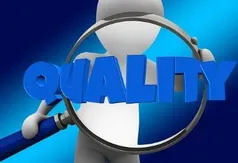IER News & blogs
Public procurement as a policy tool
 A recently published book chapter (in German) by IER's Dr Katharina Sarter explores the role of public procurement as a policy tool for promoting gender equality. Book details are available via the publisher's website.
A recently published book chapter (in German) by IER's Dr Katharina Sarter explores the role of public procurement as a policy tool for promoting gender equality. Book details are available via the publisher's website.
Findings of ‘Buying social justice through procurement’ presented
 First findings of the research project ’Buying social justice through procurement' of which IER's Dr Eva Katharina Sarter is a Co-Investigator, have been presented at the Fifth Fairness at Work Conference in Manchester in January.
First findings of the research project ’Buying social justice through procurement' of which IER's Dr Eva Katharina Sarter is a Co-Investigator, have been presented at the Fifth Fairness at Work Conference in Manchester in January.
Focussing on Scotland and Wales, the presentation comparatively explored the place of gender and race equality in the ‘Fair Work’ agendas in these two countries.
Carrying the work burden of the Covid-19 pandemic: working class women in the UK – final report out now
 Clare Lyonette from IER has been collaborating with Professor Tracey Warren from Nottingham University Business School on a 12-month ESRC-funded project on the impact of Covid on working class women. The final report was published to coincide with a webinar on June 18th.
Clare Lyonette from IER has been collaborating with Professor Tracey Warren from Nottingham University Business School on a 12-month ESRC-funded project on the impact of Covid on working class women. The final report was published to coincide with a webinar on June 18th.
The authors are also presenting their main findings to the Women and Equalities Committee on June 30th, as part of an ESRC Impact Acceleration Account grant, which focuses on disseminating current Covid-related employment research undertaken by IER to relevant UK parliamentarians, with the hope that it will then feed into their deliberations about economic recovery post-Covid.
More information can be found:
- in the final report
- in an article in The Conversation
- on the Nottingham University Business schools' COVID-19 Working women page
- in the webinar recording.
New IER working paper on gender gaps in working conditions
 The gender pay gap is well researched. This new paper by IER’s Honorary Professor Rafael Muñoz de Bustillo Llorente and his Spanish team adds to that body of research by examining the non-monetary gap in working conditions by gender. Using the European Working Conditions Survey, it explores gender differences in working conditions by different dimensions of job quality and across countries.
The gender pay gap is well researched. This new paper by IER’s Honorary Professor Rafael Muñoz de Bustillo Llorente and his Spanish team adds to that body of research by examining the non-monetary gap in working conditions by gender. Using the European Working Conditions Survey, it explores gender differences in working conditions by different dimensions of job quality and across countries.
The gender pay gap - Blog by Dr. Erika Kispeter
 Motto: “Very much enjoying all the people trying to explain away the pay gap stats by saying 'oh guys don't worry it's not a REAL pay gap, it's just that all our cleaners and PAs are women, and CEOs and directors are men!'” (@RebeccaCNReid on Twitter)
Motto: “Very much enjoying all the people trying to explain away the pay gap stats by saying 'oh guys don't worry it's not a REAL pay gap, it's just that all our cleaners and PAs are women, and CEOs and directors are men!'” (@RebeccaCNReid on Twitter)
Regulation requires large companies, charities and public sector organisations in England, Wales and Scotland to disclose their gender pay gap data every year. The deadline for publishing gender pay data for the financial year 2018-19 has now passed and the Equality and Human Rights Commission (EHRC) has promised to take action against all organisations which missed the deadline. Today activists, journalists and academics are poring over the tables and writing up early findings.
I will not engage with the findings but try to look at a few general issues which have emerged from the data and the coverage.
Firstly, there is a confusion between the gender pay gap and un/equal pay. Equal pay means that men and women at the same organisation, performing equal work must be given equal pay, in accordance with the Equality Act 2010 . Gender pay gap measures the difference in the average (hourly) wage of all men and women employed by an organisation. The pay gap is given as a percentage of men’s earnings – in 2018 it was at 17.9% in the UK. It does not measure the difference between the pay of men and women doing the same job, rather, it reflects the differences in men and women's work more generally, including the effect of men and women working in different occupations and in different time patterns. It also reflects the lack of women in more senior roles.
Secondly, the gender pay gap at a given organisation may widen from one year to the next even if the employer truly supports gender equality. This can be the result of a number of senior women leaving the company, or a number of junior women joining the company and taking up relatively low-paid positions. Following the same logic, the pay gap can be reduced by making lower paid women redundant and outsourcing their work, or reducing the pay of higher-earning men.
Overall, the introduction of mandatory gender pay gap reporting was an important step. Companies across the UK (with the exception of Northern Ireland) can no longer remain anonymous and there is hope that the public scrutiny provides an incentive for employers to improve their figures and avoid ‘reputational damage’.
